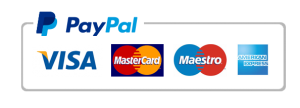Navigating Ethics in Healthcare
(Navigating Ethics in Healthcare)
HEALTHCARE ETHICS
ASSIGNMENT 2
HA570-1: Critique the need for and role of ethics in the American healthcare environment.
Instructions:
As you have learned, differences exist between morality, ethics, and the law. Morality refers to an individual‘s moral compass or belief system based on their individual perspective. Ethics refers to the standard of action that should be performed, irregardless of an individual‘s perspective, opinion, or ideology. Law simply refers to any legal requirements involved.
In an ethical dilemma, varying perspectives exist. Oftentimes, these perspectives include the patient, provider, caregiver, family member, or staff member. Every person has a unique perspective and it is these unique experiences that form our belief system. As a future leader in healthcare administration, it is important to identify and understand how these varying perspectives act as a foundation for individual morality and influence our decisions. Likewise, it is also important to understand that despite personal morality, providers are required to abide by the ethical standards present in the field.
In this unit, you will explore the differences between morality and ethics by examining a scenario and its implications from varying perspectives. By the end of this unit, you will be able to proficiently discuss the need for and role of ethics in the American healthcare environment.
To begin, select one (1) of the following stories from your textbook from which to address the assignment requirements:
· The Story of the Harvey Family and the Interprofessional Care Team (p. 3)
· The Story of Pat Jackson, the Interprofessional Care Team, and Mr. Sanchez (p. 29)
· The Story of Bill Boyd and Kate Lindy (p. 53)
· The Story of Elizabeth Kim, Max Diaz, Melinda Diaz, and Michael Meary (p. 73)
· The Story of Michael Halloran and Amrou Croteau (p. 106)
In a 5-7 page paper (excluding title page and reference list), address the following:
· Summarize the story briefly providing the ethical dilemma and parties involved.
· Discuss the varying perspectives from the parties involved. Be sure to discuss potential reasoning for the varied perspectives. Please note that you may need to include fictitious information to complete this.
· Discuss ethical standards relevant to the unique scenario.
· Identify possible personal moral convictions which may influence the direction of the story.
· Foreshadow potential events in the story of what could happen if ethical standards did not exist.
Report your findings noting the following standards:
· Current APA formatting (e.g. title page, citations, conclusion, reference page, etc.) should be used.
· Proper grammar, spelling, and punctuation are expected.
· Plagiarism, self-plagiarism, unoriginal work, and unattributed content is not permitted and will result in action pursuant to the University’s Plagiarism Policy and Procedures.
Navigating Ethics in Healthcare
HA570-2: Assess national regulations regarding confidentiality and ethical considerations of confidentiality laws.
Instructions:
As you have learned, regulations and laws exist to protect patient privacy and uphold confidentiality. Especially in a technological advanced setting, such as healthcare, maintaining these standards can prove challenging as a result of new, ethical issues not previously experienced. As a future leader in healthcare administration, it is important to understand national regulations relative to confidentiality, privacy, and informed consent.
In this unit, you will compare ethical issues of confidentiality by examining a scenario and its implications of various regulations and laws. By the end of this unit, you will be able to assess national regulations regarding confidentiality and ethical considerations of confidentiality laws.
To begin, select one (1) of the following stories from your textbook from which to address the assignment requirements:
· The Story of Twyla Roberts and Mary Louis (p. 203)
· The Story of Beth Tottle, Mrs. Uwilla, and the Uwilla Family (p. 229)
· The Story of Jack Burns and Cecelia Langer (p. 250)
· The Story of Meg Perkins and Helen Williams (p. 279)
In a 5-7 page paper (excluding title page and reference list), address the following:
· Summarize the story briefly providing the ethical dilemma and parties involved.
· Discuss the varying perspectives from the parties involved. Be sure to discuss potential reasoning for the varied perspectives. Please note that you may need to include fictitious information to complete this.
· Discuss ethical standards relevant to the unique scenario.
· Identify national regulations and laws pertinent to the story.
· Using the six-step process, explain a practical, ethical solution to your story.
Report your findings noting the following standards:
· Current APA formatting (e.g. title page, citations, conclusion, reference page, etc.) should be used.
· Proper grammar, spelling, and punctuation are expected.
· Plagiarism, self-plagiarism, unoriginal work, and unattributed content is not permitted and will result in action pursuant to the University’s Plagiarism Policy and Procedures.
Navigating Ethics in Healthcare
3: Evaluate other healthcare industry regulations that protect patients and providers and best practices for assuring that they are followed.
Instructions:
As you have learned, the role of the ethical professional in the healthcare field requires conscious decision-making and consideration for all parties involved. As a future leader in healthcare administration, it is important to understand various industry regulations that protect patients and providers in an effort to make an appropriate decision with a caring response.
In this unit, you will use the six-step process to work through an ethical issue in healthcare to make an appropriate, caring response. By the end of this unit, you will be able to identify various healthcare industry regulations that protect patients and providers. Likewise, as a result, you will be able to discuss the proper moral limits of intervention.
To begin, select one (1) of the following stories from your textbook from which to address the assignment requirements:
· The Story of Mitch Rice, Gail Campis, the Belangers, and the Botched Home Visit (p. 123)
· The Story of Maureen Gudonis and Isaias Echevarria (p. 153)
· The Story of Simon Kapinsky and the Interprofessional Ethics Subcommittee to Implement a Green Health Plan (p. 179)
In a 5-7 page paper (excluding title page and reference list), address the following:
· Summarize the story briefly providing the ethical dilemma and parties involved.
· Discuss three healthcare rules, regulations, or laws relevant to the story (in additional to national laws, you will need to research industry-specific regulations based on your story selection).
· Thoroughly discuss each phase of the six-step process relative to your story selection.
· Recommend an appropriate, caring response that aligns with industry-specific regulations and ethical standards.
Report your findings noting the following standards:
· Current APA formatting (e.g. title page, citations, conclusion, reference page, etc.) should be used.
· Proper grammar, spelling, and punctuation are expected.
· Plagiarism, self-plagiarism, unoriginal work, and unattributed content is not permitted and will result in action pursuant to the University’s Plagiarism Policy and Procedures.
Navigating Ethics in Healthcare
4: Analyze the effect ethics has on day-to-day operations as well as long-term policy and procedure in a healthcare environment.
Instructions:
As you have learned, the population segment aged 65 and older is rapidly aging in the United States. As a result, new ethical challenges are emerging in the field, specifically in long-term care (i.e. skilled nursing facilities including those with post-surgical short-term rehabilitation services).
One area of concern is the challenge of providing adequate healthcare services to a growing (and aging) population with limited resources. This dilemma is expected to increase as the population continues to increase. As a result, the demand for medical services increases; however, with finite healthcare resources, providing services to everyone who requires care is not possible.
This will present a unique challenge for nursing home administrators because they are responsible to ensure that resident needs (including receiving healthcare services) are being met. Determining who should receive the necessary care that is available will be an interdisciplinary challenge indeed.
Scholars have posited a variety of allocation methods; however, these principles have not been without controversy. One of the most recent principles introduced is the Complete Lives System. This method is unique, because unlike its predecessors that relied on a unilateral perspective, the Complete Lives Systems takes a multi-allocation system approach.
In this unit, you will combine your previous knowledge obtained throughout the course and apply clinical reasoning to evaluate moral action and its relevance to ethical-decision making in long-term care. Using ethical decision-making, you will determine the best method of allocating limited medical resources to a growing and aging population. By the end of this unit, you will be able to analyze the effect ethics has on day-to-day operations as well as long-term policy and procedure in a healthcare environment.
Navigating Ethics in Healthcare
Read the following articles from our library:
· Krütli, P., Rosemann, T., Törnblom, K. Y., & Smieszek, T. (2016). How to fairly allocate scarce medical resources: Ethical argumentation under scrutiny by health professionals and lay people. Plos ONE, 11(7), 1-18. doi:10.1371/journal.pone.0159086
· Persad, G., Wertheimer, A., & Emanuel, E. J. (2009). Department of Ethics: Principles for allocation of scarce medical interventions. The Lancet, 373, 423-431. doi:10.1016/S0140-6736(09)60137-9
Please review the following resources and using specific information from these resources, your course materials, and additional research, address the tasks posed below.
Three individuals in town require a hip surgery, followed by extensive rehabilitative therapy. Physical and occupational therapy will be provided at the skilled nursing facility where the individual will reside until able to return home. Below are details of each individual.
· Donna Mueller is a 58-year old disabled widow with no children. She spent her career as a homemaker and taking care of her husband. Donna requires surgery after falling at home while washing windows. Prior to the accident, Donna was relatively independent, although a stroke a few years prior left her partially paralyzed. She lives alone and has minimal company over.
· Steve McDonald is 40-year old unemployed musician. He has a teenage son who lives with the son’s mother in a neighboring town. At the age of 19, Steve left college to pursue a career as a drummer. For the past two decades, Steve has worked odd jobs while pursuing his dream. Although his perseverance has not landed him national attention, he has performed with a few, known bands in the area. Recently, while exiting stage left from a nightclub performance, Steve tripped over the dark stairs and fractured his hip, ultimately leaving him unemployed as he is currently unable to perform.
· Chris Snider is a 73-year old entrepreneur and business owner. Never married, Chris spent his career in the fast-pace, produce or perish industry of nanotechnology where he employs over 5,000 workers ranging from maintenance technicians to senior research engineers. Chris requires surgery after being innocently hit with a runaway golf cart on the back 9 with his visiting, foreign affiliates. Chris was completely independent prior to the accident. He lives alone; however, his business requires travel.
In a 6-8 page paper (excluding title page and reference list), address the following:
· Considering the aging population and existing challenges, discuss the potential role of allocation principles in the American healthcare system.
· Discuss the potential implications these principles have on the aging population (consider potential violations of federal antidiscrimination laws and ethical principles about fair treatment).
· Based on the Complete Lives System, discuss which individual would most likely receive the surgery.
· Based on your moral compass, ethical standards, and healthcare laws, discuss which individual you would recommend for surgery.
· Recommend the one allocation principle you would prefer as the primary medical intervention for a growing (and aging) population.
Report your findings noting the following standards:
· Current APA formatting (e.g. title page, citations, conclusion, reference page, etc.) should be used.
· Proper grammar, spelling, and punctuation are expected.
· Plagiarism, self-plagiarism, unoriginal work, and unattributed content is not permitted and will result in action pursuant to the University’s Plagiarism Policy and Procedures.
Do you need a similar assignment done for you from scratch? Order now!
Use Discount Code "Newclient" for a 15% Discount!





